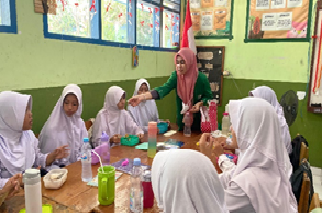Implementation of iron supplementation program increases hemoglobin levels among adolescent girls
A study in Somba Opu, Gowa
DOI:
https://doi.org/10.24252/sociality.v4i2.60479Keywords:
adolescent girls, anemia, hemoglobin, iron supplementation, rural healthAbstract
Previous studies have highlighted a persistent high prevalence of anemia among adolescent girls in rural areas, often attributed to inadequate nutritional intake and limited access to health interventions, yet few have rigorously evaluated targeted supplementation programs in this context. This study aims to assess the effectiveness of the iron supplementation program (Tablet Tambah Darah/TTD) in increasing hemoglobin levels and reducing anemia prevalence among adolescent girls in the Somba Opu health center area, Gowa. A quasi-experimental design with a one-group pre-posttest approach was employed, involving adolescent girls aged 12–18 years. The intervention consisted of routine iron supplementation and education on healthy dietary and lifestyle practices. The results demonstrated a substantial decrease in anemia prevalence: among junior high school students, anemia rates declined from 48.10% in 2023 to 26.50% in 2024, and among senior high school students, from 41.60% to 26.10% over the same period. These findings indicate that the TTD program significantly contributed to improved hemoglobin levels and reduced anemia rates in the target population. The implications underscore the importance of structured supplementation and health education programs for adolescent girls in rural settings to address nutritional deficiencies and promote overall well-being.
References
Al-Marzouqi, Z., Alsereahi, N., & Maqbali, S. (2024). Pregnant women’s perception of gestational anemia and iron supplements in Oman. JOMA, 1(1), 10–22. https://doi.org/10.3390/joma1010003

Downloads
Published
How to Cite
Issue
Section
License
Copyright (c) 2025 Dwi Santy Damayati, Syamsurya Junita, Nurfaika Nurfaika, Zaskia Maharani

This work is licensed under a Creative Commons Attribution-NonCommercial-ShareAlike 4.0 International License.

